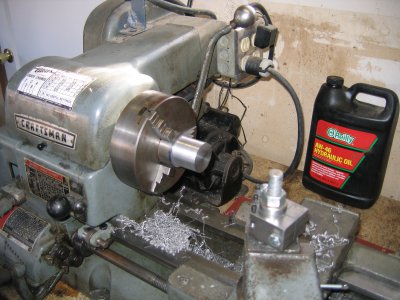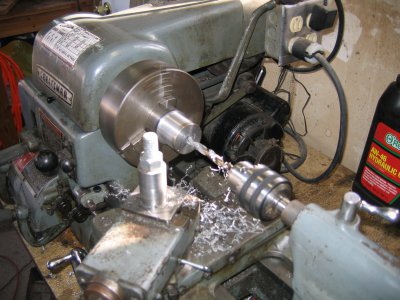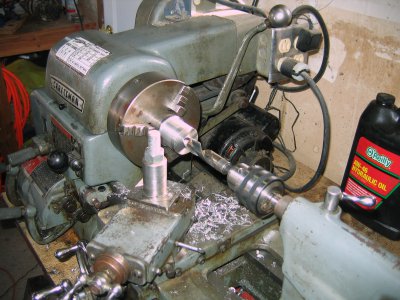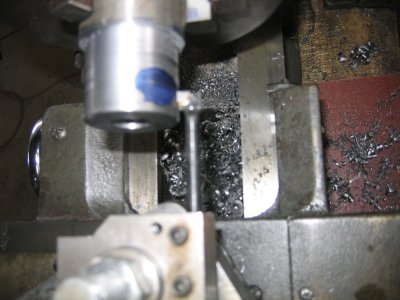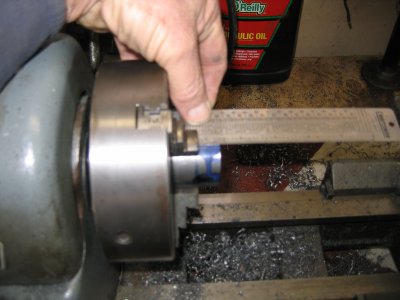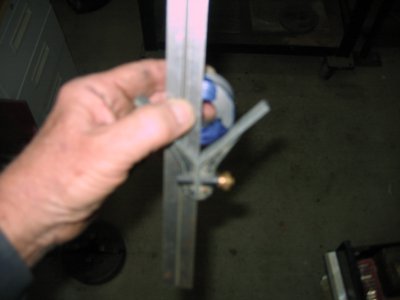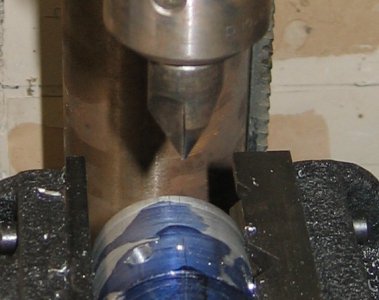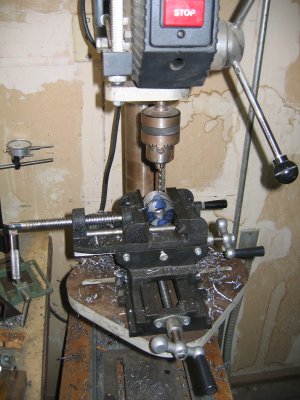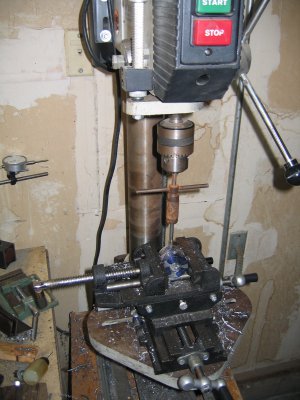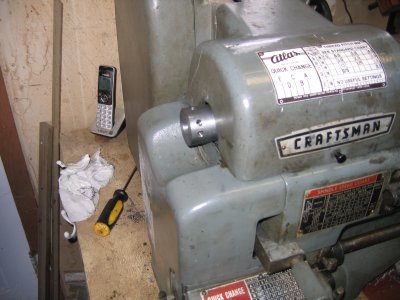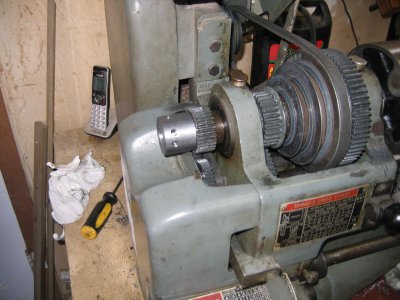The spider is done. I will pick up the bolts/setscrews this week when I go to town. I know you guys like pictures so I took a bunch as I made the spider. Chucked up the round bar in the 3 jaw and set the carriage stop a 1.500". After parting off the spider would be 1.375" long. In the past when turning to a shoulder I would wiggle a piece of paper between the stop and the carriage. When the paper grabbed I would disengage the half nuts. This time when the carriage got almost to the stop I disengaged the half nuts and did the last bit by hand. I think that the shoulder came out better doing it this way. The OD of the collar is 1.750". I used my two cut method to turn to the target 1.750". Took roughing cuts until I was within .010 and then took two final cuts of .005. Came out spot on 1.750."
View attachment 346324
Next was boring the hole. I could have drilled all the way through but decided I needed the practice boring a blind hole. The hole needed to be 1.500" deep to match the outside. I wanted the hole to be just bigger than the hole in the spindle. The spindle hole was .8125. I step drilled the hole to .750 ID using the scale on the tailstock to get 1.500" deep.
View attachment 346328 View attachment 346329
Next came the boring bar. I used the longest carbide tipped one that I had because I could bore a blind hole with it. I prefer HSS boring bars but the ones I have won't let me bore a blind hole. I set the carriage stop by running the bar as far into the hole that it would go. Used the same method that I used turning the OD to bore the ID. Run in close to the stop and do the last little bit by hand. Next came the boring and threading to match the spindle OD. 1.250 x 20 tpi x .500 long. The online threading calculator I use gave a minor diameter range of 1.196 to 1.207. To set the carriage stop I put a mark on the outside .500 from the end and put the end of the boring bar on the mark. I should have used a shorter boring bar but this one was already in the holder. I enlarged the bore to 1.195 ID.
View attachment 346339
Next came threading. Instead of using my usual method for internal threads I decided to try the straight in cross slide method that several forum members say they use for internal threading. I don't know what I did wrong but I definitely wasn't cutting threads. After fiddling with it for far too long I went back to my usual method. It was a good thing that I had bored to the minimum minor diameter. Took a couple of clean up passes and had the threads cut in no time. No pictures of the thread cutting. Parting off went well with no drama to speak of.
Next I need to drill and tap all of the holes for the screws. Like others that I have seen online I used the jaws on the chuck to mark lines equally spaced around the spider. I did this using a small metal ruler held against the jaws on 3 jaw and 4 jaw chucks. I did both for 4 screws and 3 screws because I thought that it would handy at times to use one or the other. I think that I am good to go.
View attachment 346350
Get over to the drill press and realize I need a line on the face of the spider to make sure my marks weren't off to one side and are exactly on top. Use the center finder on my combo square and discovered that the marks I had scribed don't lined up. Couldn't figure out why at the time and still don't know why they didn't line up.
View attachment 346355 Sorry for the lousy picture that doesn't show the lines being off.
I scribed new lines using the center finder. Moved on to drilling and taping holes. The X Y vice that I got from C Bag came in handy lining things up on the drill press. I am horrible at center punching. So I use a very pointed center drill instead of a center punch. Drilled and tapped the holes.
View attachment 346376 View attachment 346378 View attachment 346379
It's done.
View attachment 346380 View attachment 346382


